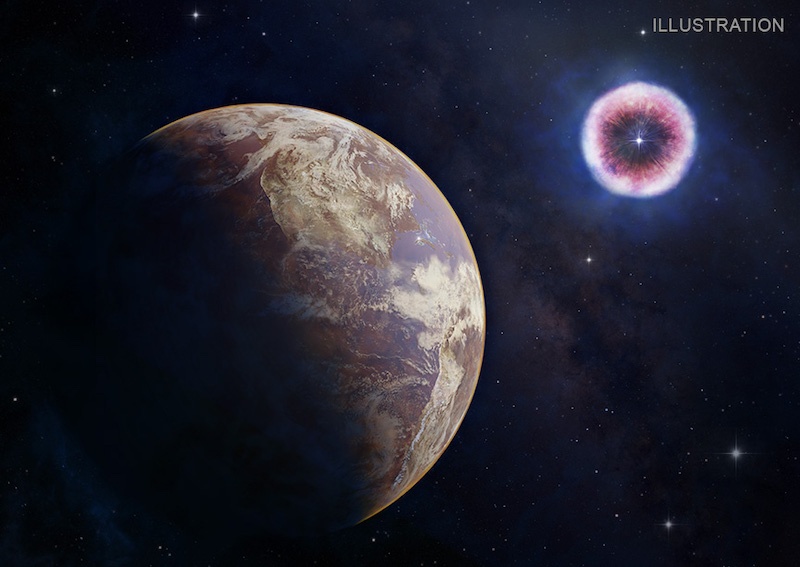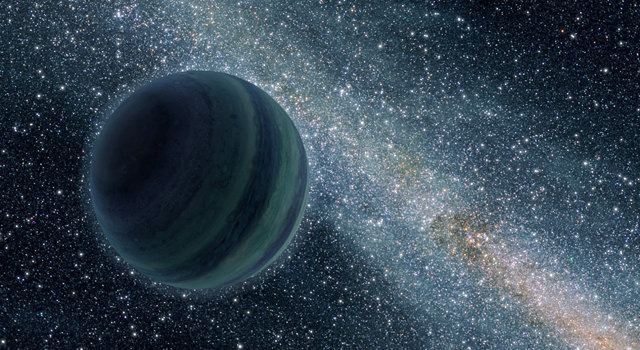The first early humans to use fire had no inkling of what it would lead to.
Fire was one of our first technologies, and humans have been making changes to their environments since the advent of controlled fire hundreds of thousands of years ago. Fast forward to current times, and our modern technological and global civilization is changing the Earth’s entire biosphere. From carbon emissions that acidify the oceans and weaken the shells of marine life to microplastics that find their way into organisms’ bloodstreams, our technology is intersecting, or combining, with the biosphere.
This has spawned a useful word: biotechnosphere.
Get accustomed to the word biotechnosphere. It’s appearing more often, and if you’re not familiar with it, you might soon be. It’s a word with a purpose whose time has come. The biosphere comprises the parts of Earth where life exists, and the biotechnosphere is the biosphere intersecting with our technology.
While much of humanity’s technological effect on Earth’s biosphere is accidental, it won’t always be. Eventually, if humanity can become a successful, long-duration civilization, we’ll purposefully use technology to manage the biosphere in comprehensive and advantageous ways. Think geoengineering, for example. We may be forced to use it to cool the Earth. But if we last long enough, the Earth will eventually enter another extensive glacial period, and we’ll have to figure out how to keep our planet warm.
 Humanity is considering using geoengineering to control the warming climate and may have to rely on it in the distant future if the Earth cools too much. It’s likely a hallmark of an ETI. It would be a necessary tool to provide long-term environmental stability. Image Credit: University of Leeds
Humanity is considering using geoengineering to control the warming climate and may have to rely on it in the distant future if the Earth cools too much. It’s likely a hallmark of an ETI. It would be a necessary tool to provide long-term environmental stability. Image Credit: University of LeedsAt that point, we’ll basically be terraforming Earth, trying to keep it nice and habitable and steady. We may even attempt to terraform other planets.
If this is the situation we’re in, then chances are that other ETIs that might exist are in the same situation.
A new article leans on the word biotechnosphere a lot, pointing out that a biotechnosphere will affect planetary evolution, and that it could be both a biosignature and a technosignature—a biotechnosignature—in the hunt for other Extraterrestrial Intelligences (ETIs.)
The article “Planetary biotechnospheres, biotechnosignatures and the search for extraterrestrial intelligence” appears in the International Journal of Astrobiology. The author is Irina Romanovskaya, a Professor of Physics and Astronomy at Houston College. Romanovskaya is the author of several articles discussing ETIs.
The article is chock-full of interesting ideas. The basic premise is that as a civilization matures, the coupling of the biosphere with technology is nearly inevitable. Genetic engineering of simple lifeforms would be widespread, and a collective intelligence would emerge that’s a combination of intelligent technologies and intelligent lifeforms. Once that’s set in motion, the biotechnosphere is well-established. And from there, it’ll likely spread.
“Space exploration can expand biotechnospheres beyond planets and create cosmic ecosystems encompassing planets and other cosmic objects; biotechnospheres, spacecraft and the environments of near-planetary, interplanetary space or interstellar space,” Romanovskaya writes.
All that activity should create detectable effects. These are biotechnosignatures, and in her article, the author presents ten examples of them. Engineered life forms play a critical role in her examples because Romanovskaya predicts that there’ll be an inevitable coupling between a civilization that needs to control planetary environments and simple, engineered microbial life the civilization would employ to exercise control.
“Change is the essential process of all existence.”
Her first example is a steady biosphere.
Regardless of whether a planet or moon hosts life, biospheres aren’t naturally steady. They respond to all kinds of astronomical and stellar events, as well as events internal to the world. Earth has had widely different geological and climatic periods in its long history. It was most likely a magma ocean, it’s been a snowball world, its climate has changed due to volcanic activity, and the Sun itself has powered all kinds of changes. There’s also evidence that nearby supernovae have driven climate change and maybe even extinctions.
 In this illustration, a supernova explodes near an Earth-like planet. Even if it was too far away to sterilize the planet, the explosion could still disrupt the biosphere. Image Credit: NASA/ CXC/ M. Weiss.
In this illustration, a supernova explodes near an Earth-like planet. Even if it was too far away to sterilize the planet, the explosion could still disrupt the biosphere. Image Credit: NASA/ CXC/ M. Weiss.So finding a planet that had a steady biosphere over a long period of time is a sign that some type of intelligence is employing powerful technology. “Change is the essential process of all existence,” Spock from Vulcan said, and it’s impossible to argue with.
“For example,” Romanovskaya writes, “the long-term stability of Earth’s climate system has been accompanied by significant climate shifts on timescales ranging from multi-million year to sub-decadal, inferred to have been driven by variations in paleogeography, greenhouse gas concentrations, astronomically forced insolation and inter-regional heat transport.” Finding a world that doesn’t experience those types of changes could be a biotechnosignature.
The second example stems from the first one. This would be a steady planetary environment accompanied by long-term steady biosignatures of complex life forms. “Life on Earth is considered as a planetary process because the evolutionary processes of life are strongly coupled to the planet’s geochemical cycles, and the evolution of Earth’s atmosphere is strongly linked to the evolution of life on Earth, with the technogenic activities of humankind further changing Earth’s atmosphere,” the author explains.
So a steady environment, steady biosignatures of complex life, and differences between biosignatures from complex and simple life over time would be a biotechnosignature. If the simple life was engineered for a purpose, then its biosignatures would change over time as it went about its task.
Biosignature three involves short-term changes in the biosignatures and planetary environments after a powerful event. Romanovskaya used the Carrington Event as an example.
The Carrington Event was a powerful solar storm that struck Earth in 1859. Damage was minimal since technology wasn’t so widespread or advanced. But if a storm that powerful struck us now, it would cause widespread damage to things like power grids and communication infrastructure, especially satellites.
If that happened on another world, then there might be biotechnosignatures. For a time, communication signals would be reduced, then they would rapidly recover as the civilization repaired the damage. In a highly technological civilization living in a biotechnosphere, the shock from a powerful solar storm could disrupt the biotechnosphere. For a period of time, biosignatures might be different until control is exerted again.
 Artist’s rendering of a solar storm hitting Mars and stripping ions from the planet’s upper atmosphere. If we saw this happening on another world and then watched as the atmosphere rapidly repaired itself, and things returned to a steady state, it could be evidence of a biotechnosphere. Credits: NASA/GSFC
Artist’s rendering of a solar storm hitting Mars and stripping ions from the planet’s upper atmosphere. If we saw this happening on another world and then watched as the atmosphere rapidly repaired itself, and things returned to a steady state, it could be evidence of a biotechnosphere. Credits: NASA/GSFCBy now, the picture is becoming clearer. The intelligent use of technology, including biotechnology, to control a biosphere is a hallmark of an ETI. In nature, biospheres don’t stay the same. Changes are the norm, as are extinctions. To avoid extinctions and undesirable changes, any ETI would employ technology. Thoughts and prayers won’t be enough.
Romanovskaya presents other illustrative examples of biotechnosignatures.
Rapid re-emergence of biosignatures after extinction-level events, persistent biosignatures and planetary environments in post-main sequence stars, and biologically-inspired technologies are on her list. She adds terraformed planets and moons, and even evidence of terraforming in our Solar System are also discussed.
She ends her list with biotechnospheres on free-floating cosmic objects like free-floating planets (FFPs.) Finding evidence of a biotechnosphere on a planet untethered to any star would be strong evidence that an ETI had been at work.
 Artist’s concept of a free-floating Jupiter-like planet. We don’t know how many FFPs there might be in the Milky Way, but finding one with steady biosignatures would almost certainly be a biotechnosignature. (NASA / JPL-Caltech)
Artist’s concept of a free-floating Jupiter-like planet. We don’t know how many FFPs there might be in the Milky Way, but finding one with steady biosignatures would almost certainly be a biotechnosignature. (NASA / JPL-Caltech)Seeing things through Romanovskaya’s lens raises a compelling question. Could ETIs detect our fledgling biotechnosphere?
Humanity seems to be on the cusp of developing a steady planetary environment. We’re certainly aware of the undesirable changes to the biosphere our industrial activities are causing. We’re already using simple life forms to process waste. If we engineer them to be more effective and if their use is widespread, their activity could produce biotechnosignatures, especially if we use them for a long time.
If we begin to employ geoengineering, that could certainly be a biotechnosignature. Romanovskaya’s primary example of a biotechnosignature is an unusually steady planetary environment. It’s certainly desirable to humans, and if we achieve it, any watching ETIs would take notice.
Are any ETIs watching Earth close enough to notice any of this? Our civilization is in no position to monitor other planetary environments for long enough periods of time to notice. It’s more science fiction than anything. But we don’t know who else might be out there, watching us.
Romanovskaya’s article is primarily about our own search for ETIs and things that signal their presence. And one long sentence sums up what she’s getting at:
“In mature planetary biotechnospheres, collective intelligence could comprise the intelligence of technologies, the intelligence of life forms, including engineered life forms and, potentially, synthetic intelligence, with all these types of intelligence acting in concert to monitor and preserve planetary biospheres and their biodiversity; to steady planetary environments and to restore them after extinction events; to support space missions and terraformation of cosmic objects; to assist with medical processes, industrial processes, mining, agricultural and food production processes.”
That’s a concise summary of her article. She’s describing not only ETIs but also humanity’s future.
Will we get there? Are other civilizations there already? Will we detect one?
Who knows. But we’d have to monitor another world for a long time to detect biotechnosignatures, so we probably have to become an ETI before we can detect one.
Romanovskaya, I. (2023). Planetary biotechnospheres, biotechnosignatures and the search for extraterrestrial intelligence. International Journal of Astrobiology, 1-33. doi:10.1017/S1473550423000204

